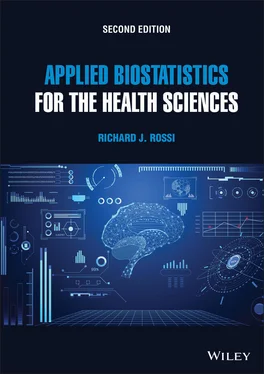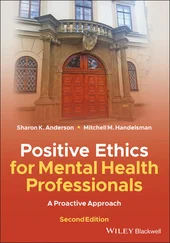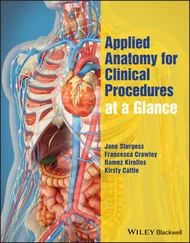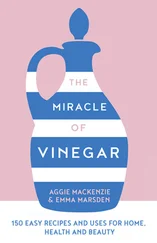Richard J. Rossi - Applied Biostatistics for the Health Sciences
Здесь есть возможность читать онлайн «Richard J. Rossi - Applied Biostatistics for the Health Sciences» — ознакомительный отрывок электронной книги совершенно бесплатно, а после прочтения отрывка купить полную версию. В некоторых случаях можно слушать аудио, скачать через торрент в формате fb2 и присутствует краткое содержание. Жанр: unrecognised, на английском языке. Описание произведения, (предисловие) а так же отзывы посетителей доступны на портале библиотеки ЛибКат.
- Название:Applied Biostatistics for the Health Sciences
- Автор:
- Жанр:
- Год:неизвестен
- ISBN:нет данных
- Рейтинг книги:3 / 5. Голосов: 1
-
Избранное:Добавить в избранное
- Отзывы:
-
Ваша оценка:
- 60
- 1
- 2
- 3
- 4
- 5
Applied Biostatistics for the Health Sciences: краткое содержание, описание и аннотация
Предлагаем к чтению аннотацию, описание, краткое содержание или предисловие (зависит от того, что написал сам автор книги «Applied Biostatistics for the Health Sciences»). Если вы не нашли необходимую информацию о книге — напишите в комментариях, мы постараемся отыскать её.
APPLIED BIOSTATISTICS FOR THE HEALTH SCIENCES Applied Biostatistics for the Health Sciences
Applied Biostatistics for the Health Sciences
Applied Biostatistics for the Health Sciences — читать онлайн ознакомительный отрывок
Ниже представлен текст книги, разбитый по страницам. Система сохранения места последней прочитанной страницы, позволяет с удобством читать онлайн бесплатно книгу «Applied Biostatistics for the Health Sciences», без необходимости каждый раз заново искать на чём Вы остановились. Поставьте закладку, и сможете в любой момент перейти на страницу, на которой закончили чтение.
Интервал:
Закладка:
1.17 In a Red Cross sponsored laboratory study designed to investigate the average length of time blood can be stored safely in a blood bank in the United States, 20 freshly sampled 500 ml blood bags were monitored over a 6-month period. The results of this laboratory study showed that blood may be stored safely on average for 17 days.What is the target population in this study?Is 17 a statistic or a parameter? Explain.
1.18 In a study to examine the relationship between alcohol use and Alzheimer’s disease, 500 participants aged 60 and older who have been diagnosed with Alzheimer’s disease were selected for this study. The 500 participants were classified into three groups by alcohol use with one group consisting of participants who do not use alcohol, a second group consisted of participants with low or moderate alcohol use, and a third group consisted of participants with high alcohol use. Doctors will use a cognitive test to assess the stage of a participant’s Alzheimer’s disease and comparisons are to be made among the three groups.What is the target population in this study?What are the units of the target population?What is the sample size for this study?Is this an experiment or an observational study?What are the treatment groups in this study?Was randomization used to create the three groups of participants?
1.19 To study whether vitamin C is effective in shortening the duration of a common cold, a random sample of 300 volunteers with colds is selected, and the 300 volunteers are randomly divided into three groups of size 100. One group gets a supply of 1000 mg vitamin C pills and is instructed to take a pill each day until their cold symptoms vanish, a second group receives a supply of 500 mg vitamin C pills to be taken each day until their cold symptoms vanish, and the third group receives a supply of placebo pills to be taken each day until their cold symptoms vanish. The subjects are asked to record the duration of each cold they have in a one year period.What is the target population in this study?Is this an experiment or an observational study?What are the treatments in this study?Could this study be run as a double-blind study? Explain.
1.20 In a study designed to investigate the efficacy of three treatments for melanoma cancer, 912 individuals were identified as candidates for the study from Veterans Administration hospital records. The treatments being studied are excision surgery, excision surgery followed by Interferon Alpha-2B, and a homeopathic treatment. The goal of this study is to estimate the percentage of melanoma cancer patients surviving at least five years following treatment. The variables age, gender, and race are also recorded for each individual in the study since they are believed to be associated with the survival time of a melanoma patient. The survival time of a patient is recorded when they die before the five year study period is over. Determinethe target population for this study.the parameter of interest for this study.the response variable in this study.the explanatory variables in this study.the treatments being studied.whether or not this can be performed as an experiment. Explain.
1.21 What is aretrospective study?prospective study?longitudinal study?case–control study?cross-sectional study?clinical trial?blinded study?double-blind study?
1.22 How do prospective and retrospective studies differ?
1.23 What is a randomized controlled study?
1.24 Use the Internet to find an article published in a biomedical journal where a prospective study was used and identify the target population, the units of the population, the response variable, the treatments used in the study, and the explanatory variables measured in the study.
1.25 Use the Internet to find an article published in a biomedical journal where a retrospective study was used and identify the target population, the units of the population, the response variable, the treatments used in the case–control study, and the explanatory variables measured in the study.
1.26 Use the Internet to find an article published in a biomedical journal where a cohort study was used and identify the target population, the units of the population, the response variable, the treatments used in the study, and the explanatory variables measured in the study.
1.27 Use the Internet to find an article published in a biomedical journal where a double-blind study was used and identify the target population, the units of the population, the response variable, the treatments used in the study, and the explanatory variables measured in the study.
1.28 Use the Internet to find an article published in a biomedical journal where a cross-sectional study was used and identify the target population, the units of the population, the response variable, the treatments used in the study, and the explanatory variables measured in the study.
1.29 Use the Internet to find an article published in a biomedical journal where a prospective case-control study was used and identify the target population, the units of the population, the response variable, the treatments used in the study, and the explanatory variables measured in the study.
1.30 What is anexperiment?observational study?
1.31 How is an experiment different from an observational study?
1.32 Why is an experiment preferred over an observation study?
1.33 Why are retrospective studies and case–control studies observational studies?
1.34 Explain why it would or would not be ethical to perform an experiment in each of the scenarios below.A researcher is interested in the effects of smoking cigarettes on human health. The researcher would like to assign subjects to the two treatments smoked cigarettes for 25 years and did not smoke cigarettes at all in a 25 year period in a prospective study.A researcher is interested in determining the efficacy of a new HIV/AIDS drug. The researcher would like to assign subjects to standard treatment and the new drug in a randomized controlled study.A researcher is interested in identifying the risk factors associated with Alzheimer’s disease. The researcher would like to assign subjects to several different risk factors in a 20-year prospective study.A researcher is interested in identifying the relationship between hormone therapy and breast cancer. The researcher would like to assign subjects to the treatments hormone therapy, time-reduced hormone therapy, and no hormone therapy at all in a 20-year prospective study.
1.35 What are the six different types of clinical trials that were discussed in Chapter 1?
1.36 What is aprevention trial?quality-of-life trial?screening trial? treatment trial?
1.37 What are the four phases of clinical trials?
1.38 What is adose finding trial?safety and efficacy trial?comparative treatment efficacy trial?expanded safety trial?
1.39 What phases must a new drug, treatment, or biomedical procedure go through to receive approval for widespread use in the United States?
1.40 What is the purpose of running a phase IV trial after a new drug, treatment, or biomedical procedure has been approved?
1.41 What reasons might be used for prematurely stopping a clinical trial?
1.42 Are all research studies based on clinical trials required to be studied in all four phases? Explain.
1.43 Use the Internet to findthe FDA regulations for the approval of a new drug.the regulations used in the United Kingdom for the approval of a new drug.the regulations used in Japan for the approval of a new drug.two drugs that have been taken off the market for safety reasons after their approval.out what the CDER agency does with regard to drugs developed and marketed in the United States.
1.44 In the clinical trial Direct Lysis of Staph Aureus Resistant Pathogen Trial of Exebacase (DISRUPT)(NCT04160468) which is summarized at https://clinicaltrials.gov/ct2/show/nct04160468, determine theestimated enrollment in this experiment.treatments in this experiment.eligibility requirements for a participant in this clinical trial.start date of this study.
Читать дальшеИнтервал:
Закладка:
Похожие книги на «Applied Biostatistics for the Health Sciences»
Представляем Вашему вниманию похожие книги на «Applied Biostatistics for the Health Sciences» списком для выбора. Мы отобрали схожую по названию и смыслу литературу в надежде предоставить читателям больше вариантов отыскать новые, интересные, ещё непрочитанные произведения.
Обсуждение, отзывы о книге «Applied Biostatistics for the Health Sciences» и просто собственные мнения читателей. Оставьте ваши комментарии, напишите, что Вы думаете о произведении, его смысле или главных героях. Укажите что конкретно понравилось, а что нет, и почему Вы так считаете.












